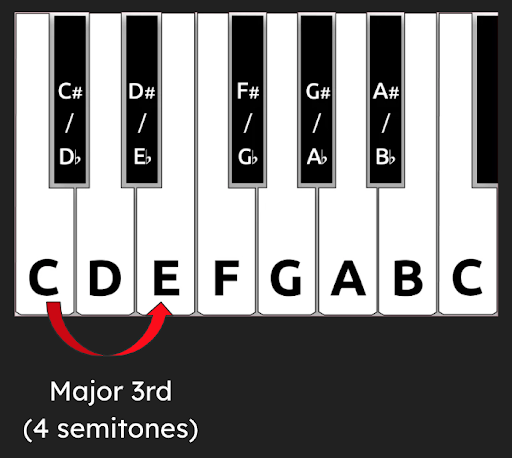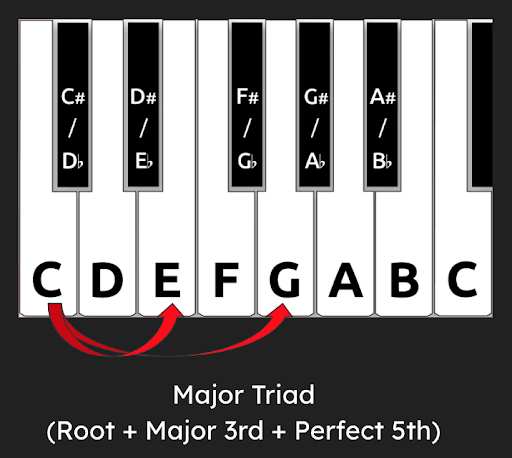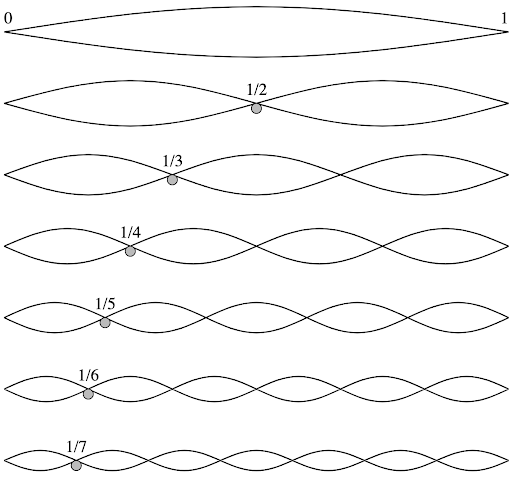WRITTEN BY James Yaiullo
SFX Editor, BOOM BOX POST
Creating sound effects from a musical angle adds a unique and fun energy to your design. Sound effects, either momentary or sequential, can be made all the more engaging if their basis is a musical one, especially in animation. That being said, balance is key when approaching sound effect design from a musical perspective.
What are some of the most easily implemented musical basics?
If you don’t have a strong musical background, a good place to start is by learning a few basic musical intervals. An interval refers to the distance between two particular notes. Here are some commonly utilized intervals in simple, fun musically-pitched designs:
Major 3rd
The major 3rd is the classic “happy” interval. It’s often used for warm and inviting sounds, like that of a doorbell. It’s a perfect interval to use if you’re looking to give an object or character a generally positive, welcoming presence.
Perfect 4th
The perfect 4th is only one semitone away from the major 3rd. It is more neutral sounding, though it still gives the impression of something positive, like progress being made. When you hear Mario collect a coin, you’re hearing a perfect 4th.
Perfect 5th
The perfect 5th is probably the most stable sounding interval. Think “motif of a self-assured trumpet fanfare”. This is a great interval to utilize when you’re looking to make a confident sound.
Octave
An octave is the same note repeated in two adjacent registers. Similar to the perfect 4th, it is relatively neutral sounding.
Putting multiple intervals together
Now that we know a few basic intervals, what might happen if we put a couple of them together?
Major Triad
If we take a root note and add a major 3rd and perfect 5th, we end up with one of the most basic chords: a major triad. It functions much like the major 3rd, happy, calm and inviting, but more filled out and interesting. It also comes across as more obviously musical because it is a bit more complex than a simple interval.
Where do these notes come from?
Did we just nab these notes from the ether arbitrarily? Is there a reason some combinations of notes seem pleasant and others not? Is there a basis for any of this?!
The Overtone Series
Yes! It so happens that all of these notes occur naturally, often simultaneously. Let’s make sense of that. Here we’ll take the lowest string of a guitar as an example. The depiction at the top represents the string vibrating at its full length, creating the pitch E. While the string is vibrating at its full length and creating that E note, the string is also vibrating at half its length, resulting in another E note, but an octave higher. At the same time, the string is also vibrating at a third its length, resulting in a G note, an octave and a perfect 5th above the root note. And so on, and so on, theoretically endlessly, beyond the range of human hearing. All of these notes occurring above the fundamental note are called overtones.
To reveal these overtones on a guitar string, I’ve placed my finger at each of these nodes but not pressed down on the fret. The reason our ears register this string as just an E when played normally is because all of these overtones are much quieter than the fundamental, resulting in them being masked by the main E note. It’s within these overtones that we can find the aforementioned intervals. These major 3rds and perfect 5ths come across as pleasant to us because they’re mathematically built into the nature of resonating sound.
You can find the overtone series in other types of resonating bodies, like the pipe of an organ, and even in your own body! It is possible to sing and shape one’s mouth in a way that will produce overtones. I don’t have the skill to demonstrate that, but I can do it in one other way - a way I discovered by accident when I was younger. By pressing an electric razor up to my cheek, I can adjust the shape of my mouth to access the overtone series. The audio example below is a recording of just that!
Striking the Balance
As fun as it is to musically pitch sound effects, it’s important to do it in moderation. Too much musical pitching can get distracting quickly, especially when taking into account that there likely will be actual music tracks occurring at the same time as your effects. It’s good practice to break up any design sequence that features musical pitching with a moment or two of non-musical pitching. For most Western listeners, “non-musical” can be considered any sequence of pitches that don’t adhere to the notes on a keyboard. As fun and charming as musically-pitched UI beeps can be, it can be information overload if not done in moderation!
If you enjoyed this blog, check out these:
LUNCH AND LEARN: RECREATING A MUSICAL TUNE AS A SOUND EFFECT
A BEGINNER'S GUIDE TO STARTING DESIGNING RHYTHMIC AMBIENCES SOUND EFFECTS LIBRARY
SOUND EDITING WITH MUSIC IN MIND








